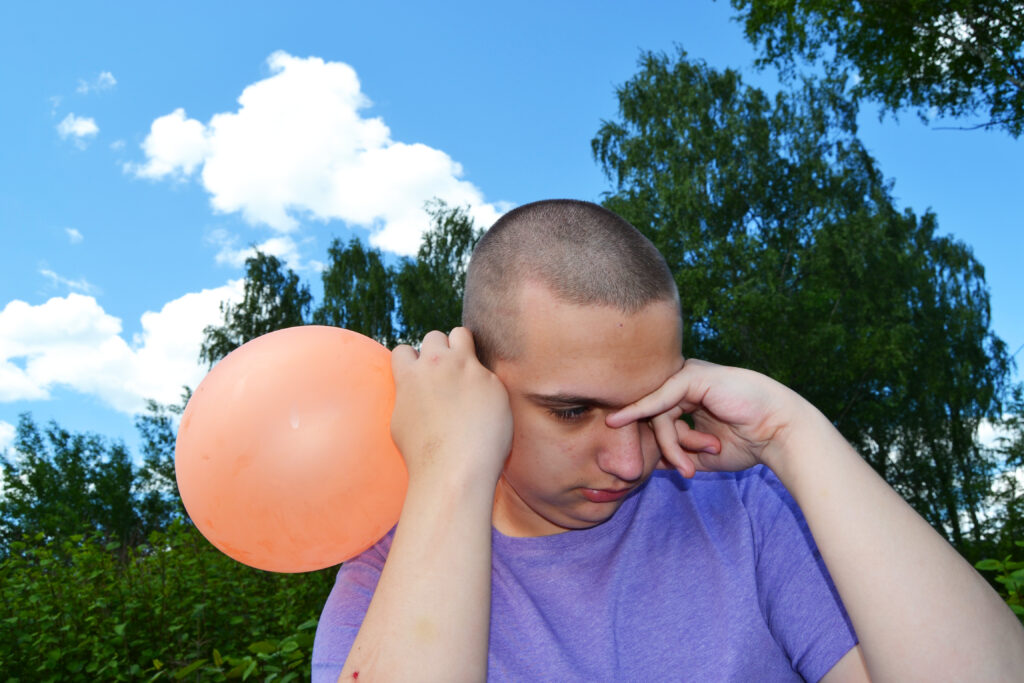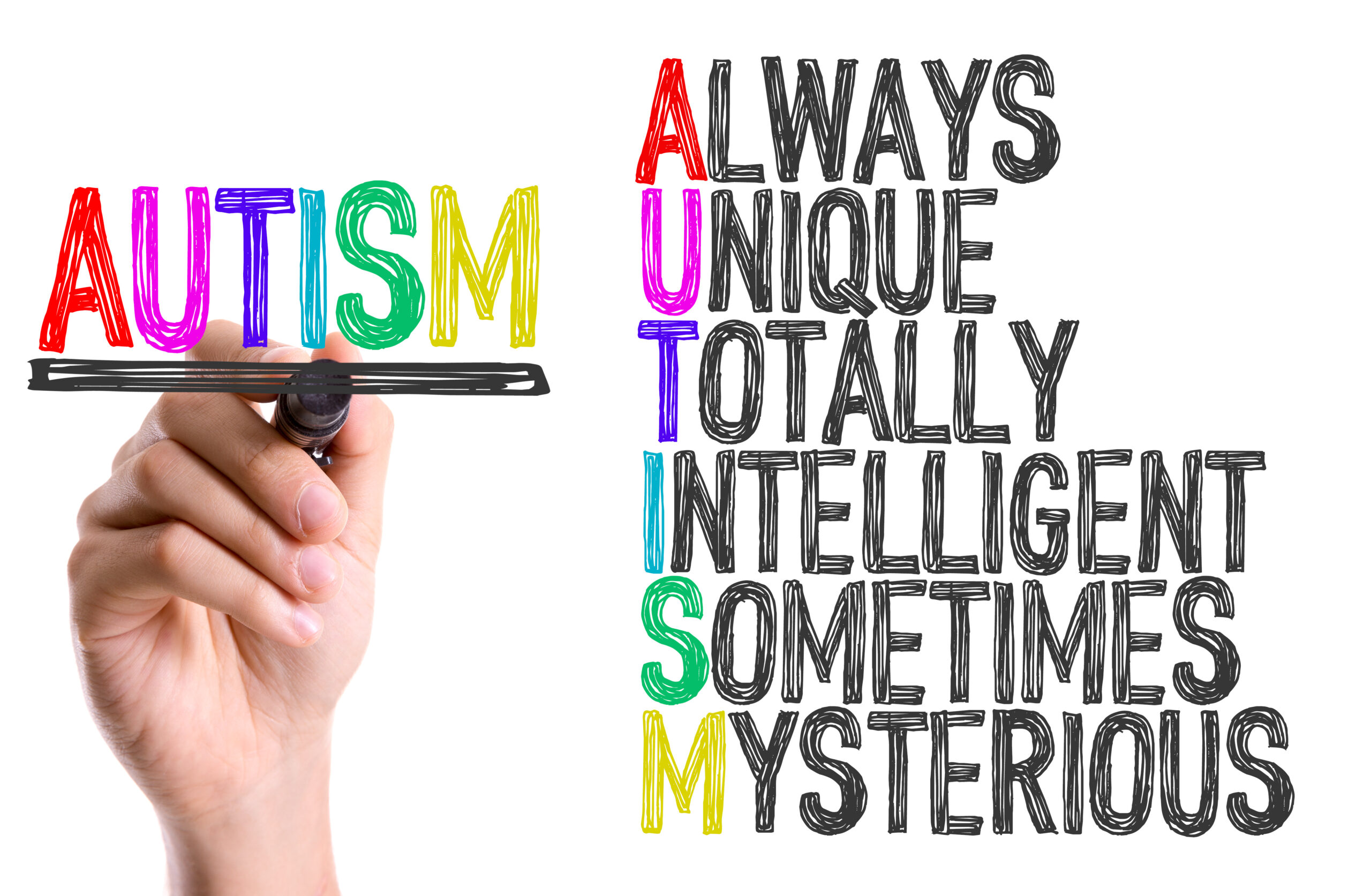*This informative piece was written by our Board Member, Sylvan Pearlstein, an autistic person.
April is commonly called World Autism Awareness Month, but autistic self-advocates urge everyone to observe it as World Autism Acceptance Month. The general public is more aware of autism as a concept than ever before, yet autistic people still face discrimination and lack of acceptance.
A recent report from the CDC suggests that 1 in 36 children is diagnosed with autism. But despite the prevalence of this diagnosis, autism is still widely misunderstood by the non-autistic population, including those in the medical and mental health fields. In order to better understand the barriers to independent living that autistic people may face, we need a better understanding of what being autistic really means.
(Language note: This article uses “autistic people” rather than “people with autism” because the former is preferred by most autistic people. Some also use “autistics” or capitalize Autistic.)
What is autism?
Autism is a neurodevelopmental difference, also called a developmental disability, meaning it is inherent to a person and continues throughout their life. Autism is probably caused largely by genetic factors, but it isn’t detected with a lab test; rather, the diagnostic process involves taking an IQ test and similar assessments and being subjectively evaluated by the person administering them.

Image description: The image is of an autistic boy who appears agitated. He is outside with a blue sky and trees behind him. He is holding a balloon close to his ear, while his other hand is pressed to the side of his face with one finger over his eyes. He is wearing a purple shirt and had a shaved head.
Being autistic affects the way a person thinks, moves, communicates, and processes sensory information. It’s hard to give a brief description of what being autistic is like, because autistic traits vary widely from person to person, with different traits varying independently of each other. Because of this wide variation, autism is frequently described as a spectrum, like a wheel or map of all the visible colors.
The following are some examples of autistic traits involving sensory processing and movement:
- Autistic people may have heightened sensitivity to sounds, light, textures, smells, and/or tastes. Making eye contact with others can also be an intense and potentially painful stimulus.
- Filtering out “background” sensory information to focus on one specific subject is more difficult for autistic people, requiring more energy and conscious effort than non-autistic people usually need to expend.
- It can be hard for autistic people to process sensory information, such as being unable to distinguish what someone said despite having heard their voice, or feeling hungry but not recognizing the sensation as hunger.
- Bodily coordination for movement and speech can be difficult. Autistic people often use echolalia, which is repeated speech outside of its original context. Many autistic people – for children diagnosed with autism, estimates range from 25 to 40 percent – are non-speaking or minimally speaking, meaning they cannot rely on speech to communicate fully. Autistic non-speakers can use augmentative and alternative communication (AAC) systems and devices.
- Autistic people may engage in repetitive motions or make repetitive sounds as a means of sensory regulation. This is called stimming, short for “self-stimulatory behavior.”
- Autistic people can become overwhelmed by intense, unpleasant, or unexpected physical sensations, environmental stimuli, or emotions, leading to full-body distress and loss of control.
Some autistic traits are also related to cognition and social interaction:
- As with sensory input, emotions can be very intense for autistic people, and hard to “filter out” to focus on other thoughts or sensations.
- Executive functioning processes, such as planning and task initiation, can be difficult and stressful for autistic people. Switching from one activity to another can be particularly time- and energy-consuming, a phenomenon sometimes called autistic inertia.
- Following a specific routine, often with a greater degree of repetition than non-autistic people prefer, helps many autistic people regulate their stress levels.
- Autistic people tend to have an especially deep and passionate interest in particular subjects. Whereas non-autistic people can be thought of as “generalists” in terms of their interests and knowledge bases, having some general knowledge on a wide variety of subjects, autistic people can be thought of as “specialists,” accumulating extensive knowledge about a few specific subjects.
- Similarly, autistic peoples’ skill sets may be less generalized and more specific, meaning some tasks that non-autistic people consider difficult may be easy for an autistic person, while the same person may need support for tasks that their non-autistic peers consider easy. (Both sensory issues and executive functioning issues can cause difficulty.) For example, one autistic person may find it much easier to cook a restaurant-quality meal than to wash the dishes.
- Autistic people socialize differently than non-autistic people, prioritizing word meaning over nonverbal cues like facial expressions, and would generally rather be honest at the risk of impoliteness than polite at the risk of dishonesty. It’s also common for autistic people to discuss their interests extensively, and to gravitate toward meaningful topics, whereas non-autistic people tend to socialize with more “small talk.”
- Social norms in general tend to be unintuitive to autistic people, who are more likely to care about whether something seems right or wrong than whether it seems normal or abnormal.
Some people diagnosed with autism are also diagnosed with intellectual disability. Many autistic people also have ADHD, another neurodevelopmental difference that involves difficulty “filtering out” stimuli. Epilepsy is relatively common as well. Anxiety disorders and depression are also prevalent in autistic people, but these seem less likely to be natural co-occurrences than to be caused by the social pressures that autistic people face, including bullying among children and social ostracization among adults.
The Autistic Self Advocacy Network has an “About Autism” page here [link].
What does our society think about autism?
The American Psychiatric Association’s current Diagnostic and Statistical Manual (DSM-5) call it Autism Spectrum Disorder, or ASD, and defines it in terms of “deficits in social communication” and “restricted, repetitive patterns of behavior, interests, or activities.” Sensory issues and cognitive differences are not mentioned; this definition only addresses autistic traits that are visible from the outside. Those traits are described as deficits and restrictions.

Dr Leo Kanner. Image description: Leo Kanner is pictured in this black and white image wearing a suit jacket and tie. His dark hair is short. He is turned 1/4 turn away from the camera and looks as though he is speaking. His hand is raised next to his face as if gesturing.
Since the time autism was first recognized in 1943, it has mostly been discussed in these kinds of terms. Leo Kanner, who identified and named autism, based his research on his observations of children who had been brought to his clinic because they’d been identified as atypical. Many of the children were non-speaking or minimally speaking and did not interact with their parents or others in the expected ways. Kanner noted the children’s difficulties and idiosyncrasies with language use, their apparent lack of social connection, and their interest in repetition and specific activities. However, because the children had limited ability to communicate with him in terms he would understand, he did not gain any insight into what they were thinking and feeling, and instead made his own guesses about why they did not relate to other people or their surroundings in the “normal” way.
This pattern would become standard in autism research: the focus is on observations of externally visible behavior, not on autistic people’s reports of their internal states. This is largely because of ableism, the pervasive cultural biases against and fears surrounding disabled people. Non-autistic researchers and other psychiatric professionals usually take for granted the assumption that it’s better to be neurodevelopmentally “normal” than different, and this can lead to the assumption that their observations are more insightful than an autistic person’s self-reporting would be. Even today, when many autistic people, including non-speakers, describe their experiences on blogs and social media, misconceptions about autism are repeated by major organizations and healthcare providers.
One very common type of misconception is about autistic people not understanding what others are thinking or feeling. This is true to some extent because autistic and non-autistic people think and communicate differently, but it is frequently presented as “autistic people lack empathy.” But as many autistic people have pointed out, this difficulty is on both sides – non-autistic people have trouble understanding what autistic people are thinking or feeling, too. Autistic researcher Damian Milton has coined the term “double empathy problem” to describe this mismatch of communication styles. However, it’s still common to see framing like the DSM-5’s claim that autism involves “deficits in social communication.”
Some people are very judgmental of autistic people’s differences, specifically the fact that autistic people do not always behave in socially accepted ways. These people talk about autism like it’s a disease like cancer, something that is inherently harmful and should be “fought.” Parents of autistic children are encouraged to try to change their children’s “challenging behavior” rather than try to understand what their children are experiencing. Genetic research on autism is undertaken in the hopes of being able to “cure” autistic people and stop more autistic people from being born.
There is another way to think about autism and other neurodevelopmental differences. Neurodiversity is a framework that recognizes that everyone’s mind works differently, and not only is that okay, but it’s also a good thing for all of us. Because people think differently from each other, we all have unique contributions we can make, and society is stronger than it would be if everyone’s ideas and skills were the same. In a neurodiversity context, people with the predominating neurotype (in psychiatric terms, people without IDD) are called neurotypical, and people with other neurotypes may be called neurodivergent. No one neurotype makes people more worthy or valuable than any other.
The neurodiversity framework is a less common way to talk about neurodevelopmental differences than the deficit model, but it is more compassionate and less based on cultural assumptions about normalcy. Frameworks like neurodiversity show how society could change its perception to be more inclusive of disabled people, rather than disabled people who need to change to fit into society.
What societal barriers do autistic people face?

Image description: A child sits in a psychologist’s office. He looks sad and is holding a wooden posable figure doll. We see a whiteboard behind him with different facial emotions drawn on it. The psychologist sits to the left of the child. We only see their arms and knees. One hand is placed on the child’s shoulder. They have a clipboard in their lap.
Some autistic traits, such as unique thought-processing patterns, can present inherent challenges. But the majority of barriers to independent and fulfilled living for autistic people have to do with stigmatization, lack of social acceptance (including at schools and workplaces), and lack of necessary support.
One problem is a persistent trend of trying to divide autistic people into categories of “more and less autistic.” People considered “high-functioning” may be conditionally accepted by others, but this comes at the cost of pressure to mask their autistic traits so they won’t be rejected, and they may not get the support they need because it’s assumed they’re “not that autistic.” People labeled “low-functioning” are treated as though they don’t have the capacity for self-determination and independent living.
A specific problem facing autistic children is the prevalence of Applied Behavior Analysis (ABA), a “treatment” similar to gay conversion therapy (and invented by the same person). It attempts to condition autistic children to behave like non-autistic children by punishing them for behaviors including instinctive self-regulation motions and stimulus avoidance reactions. This is deeply traumatic, teaching them that it is wrong to be who they are, encouraging them to suppress their natural pain and distress responses, and conditioning them to be compliant with authority regardless of their own well-being.
Other barriers faced by autistic people include the following:
- More autistic children are bullied than are not bullied.
- Children of color, white female children, and children from working-class families are more likely to have their autistic traits go undiagnosed or be misdiagnosed.
- AAC devices for non- and minimally-speaking autistic people can be expensive and are not necessarily covered by health insurance.
- Support services for autistic children end when children reach adulthood, and support services for autistic adults are not mandated, so they are almost nonexistent.
- Autistic adults who need assistance with independent living tasks face long wait lists.
- Autistic adults are at increased risk of poverty, depression, and health problems.
- Over 70 percent of autistic adults are unemployed or underemployed, and up to 85 percent of college-educated autistic adults are unemployed.
- Police are often hostile and potentially dangerous to autistic adults and teenagers, especially autistic people of color because they are perceived as “behaving strangely.”
The self-advocacy movement began with people diagnosed with IDD. Cultural perceptions have shifted somewhat over time, and more people are learning about neurodiversity, but today’s autistic self-advocates are still fighting the same kind of battles. As we leave April behind, autistic people will continue to make their voices heard, calling out for greater acceptance and inclusion.





